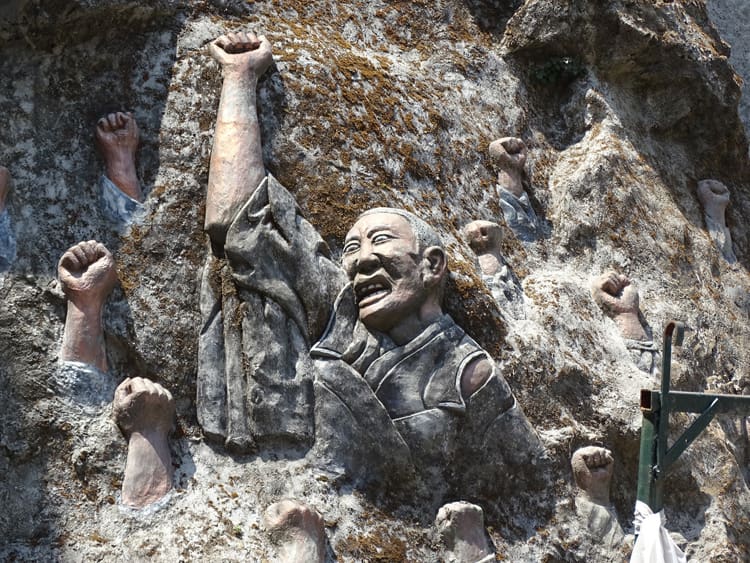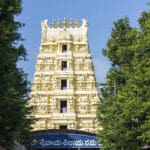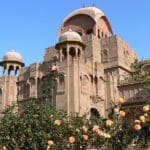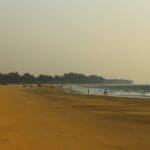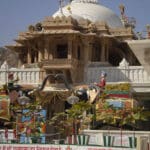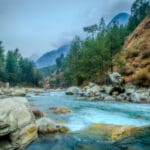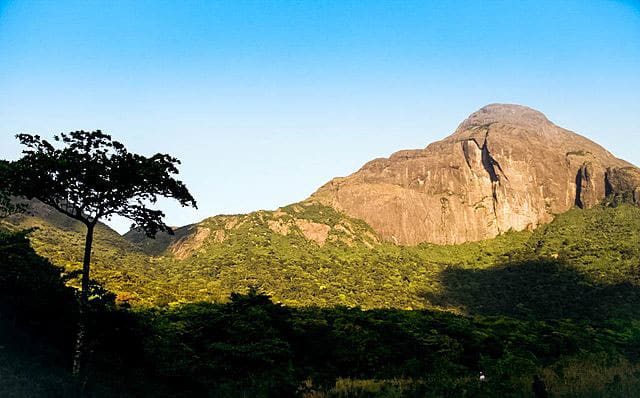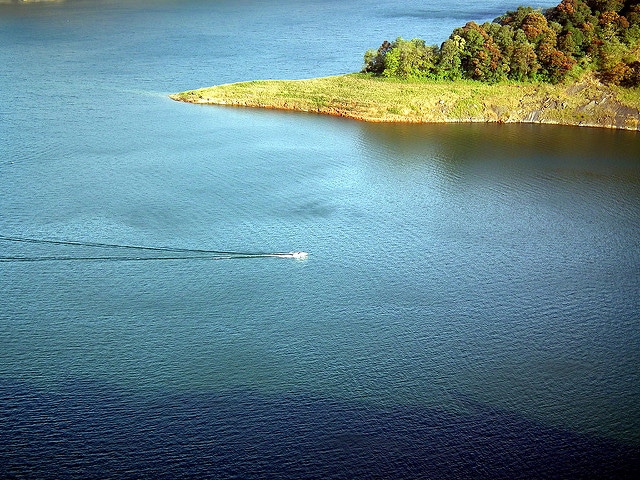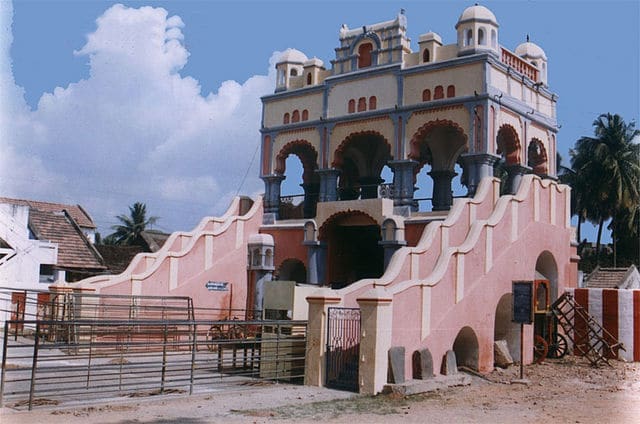Nestled in the serene hills of McLeodganj, Himachal Pradesh, Tsuglag Khang, also known as the Dalai Lama Temple Complex, stands as a beacon of Tibetan spirituality, culture, and resilience. This sacred site, the official residence of His Holiness the 14th Dalai Lama, attracts thousands of pilgrims, tourists, and spiritual seekers annually. Situated in the heart of McLeodganj, a vibrant suburb of Dharamshala, Tsuglag Khang offers a unique blend of Buddhist heritage, architectural beauty, and tranquil ambiance. This comprehensive guide explores every facet of this iconic complex, from its history and architecture to its cultural significance and visitor experiences, ensuring a deep understanding of why Tsuglag Khang, McLeodganj is a must-visit destination.
The Historical Significance of Tsuglag Khang
Origins and Evolution of Tsuglag Khang
Tsuglag Khang is not merely a temple but a spiritual and cultural hub for the Tibetan diaspora. Established in 1969, it serves as the primary temple complex for Tibetan Buddhists in exile, functioning as a counterpart to the Jokhang Temple in Lhasa, Tibet. Following the Tibetan uprising in 1959, the 14th Dalai Lama, Tenzin Gyatso, sought refuge in India, making McLeodganj his home. The complex, located at the end of Temple Road, was constructed to provide a space for worship, education, and community gatherings for the exiled Tibetan community.
The name Tsuglag Khang translates to “House of Learning” in Tibetan, reflecting its role as a center for spiritual and intellectual growth. The complex houses the Dalai Lama’s residence (Photang), the Tsuglagkhang Temple, Namgyal Gompa, and the Tibet Museum, each contributing to its multifaceted significance. Its establishment marked a pivotal moment in preserving Tibetan Buddhist traditions outside Tibet, making it the largest Tibetan temple outside the region.
The Role of Tsuglag Khang in Tibetan Exile
Since its inception, Tsuglag Khang has been the heart of the Tibetan government-in-exile’s spiritual and administrative activities. The complex is a living testament to the resilience of Tibetan culture in the face of adversity. After the Chinese occupation of Tibet, many Tibetans fled to India, bringing their rich traditions and spiritual practices. Tsuglag Khang became a sanctuary where monks, nuns, and laypeople could practice Buddhism freely, attend teachings, and engage in cultural preservation.
The Dalai Lama’s public teachings, often held in the main temple, draw global audiences, fostering cross-cultural understanding. These sessions, though irregular, are a highlight for visitors, offering a rare opportunity to hear His Holiness speak on compassion, mindfulness, and Buddhist philosophy. The complex also hosts debates by Namgyal Monastery monks, a vibrant tradition that showcases the intellectual rigor of Tibetan Buddhism.
Architectural Marvels of Tsuglag Khang
Traditional Tibetan Design Elements
The architecture of Tsuglag Khang is a striking representation of Tibetan aesthetics, characterized by simplicity and spiritual symbolism. Unlike the ornate gompas of Ladakh, the complex adopts a functional yet meaningful design. The custard-colored concrete structures are adorned with colorful prayer flags fluttering in the Himalayan breeze, creating a serene and inviting atmosphere. Intricate carvings, vibrant paintings, and statues of key Buddhist figures dominate the interiors, reflecting centuries-old artistic traditions.
The main temple houses a 3-meter-high bronze statue of Sakyamuni Buddha, flanked by statues of Avalokiteshvara (the Bodhisattva of Compassion) and Padmasambhava (Guru Rinpoche), the founder of Tibetan Buddhism. These statues, crafted with meticulous detail, are focal points for meditation and worship. The Kalachakra Temple, another highlight, features mesmerizing mandalas and murals depicting the “Wheel of Life,” a visual representation of Buddhist cosmology.
The Layout of the Complex
Tsuglag Khang is a sprawling complex comprising several distinct areas, each serving a unique purpose:
- Photang (Dalai Lama’s Residence): A guarded section inaccessible to the public, this is where His Holiness resides when in McLeodganj.
- Tsuglagkhang Temple: The spiritual heart of the complex, where daily prayers and rituals occur.
- Namgyal Gompa: A monastery dedicated to training monks in Buddhist rituals and debates.
- Tibet Museum: A repository of Tibetan history, showcasing artifacts, photographs, and narratives of the Tibetan struggle.
- Library and Bookstore: A treasure trove of Buddhist texts and literature, including works handpicked by the Dalai Lama.
- Cafeteria: A vegetarian eatery offering refreshments and a chance to mingle with monks and visitors.
The complex is designed for clockwise circumambulation (kora), a Buddhist ritual where pilgrims walk around sacred sites, spinning prayer wheels to accumulate merit. The kora path, lined with prayer wheels, chortens, and stupas, offers panoramic views of the Dhauladhar mountains, enhancing the spiritual experience.
Spiritual and Cultural Significance
A Hub for Tibetan Buddhism
Tsuglag Khang is the epicenter of Tibetan Buddhist practice in exile. The Namgyal Monastery, established in the 16th century and relocated to McLeodganj in 1959, trains monks in rituals, meditation, and philosophical debates. Visitors can witness these debates, held daily (except Sundays) at 1:30 p.m., where monks engage in spirited exchanges, punctuated by dramatic hand claps and foot stomps. This tradition, both intellectual and theatrical, offers insight into the depth of Buddhist scholarship.
The complex also hosts meditation classes, workshops, and festivals, such as Losar (Tibetan New Year), which draw global participants. The Dalai Lama’s teachings, when scheduled, are a highlight, with translations available via FM radio for international visitors. These events underscore Tsuglag Khang’s role as a global center for Buddhist learning and practice.
Preserving Tibetan Culture
Beyond spirituality, Tsuglag Khang is a bastion of Tibetan cultural preservation. The Tibet Museum, established in 1998, is a must-visit for understanding the Tibetan struggle. Its two-story exhibit includes over 30,000 photographs, historical artifacts, and a documentary screened daily at 3 p.m. The museum chronicles the Chinese occupation of Tibet, the exodus of refugees, and their efforts to preserve their identity in exile. The emotional displays, including images of Tibetan self-immolations, highlight the community’s resilience and ongoing fight for freedom.
The library and bookstore further this mission by housing rare manuscripts and texts on Tibetan Buddhism, history, and culture. Visitors can purchase books, prayer flags, and bracelets, supporting local artisans and the preservation of Tibetan heritage.
Exploring Tsuglag Khang: A Visitor’s Guide
Getting to Tsuglag Khang
Located in the southwest corner of McLeodganj, Tsuglag Khang is easily accessible on foot from the main square. The complex is at the end of Temple Road, marked by a large iron gate and security screening. McLeodganj itself is 10 km from Dharamshala, reachable by taxi, bus, or the Dharamshala Skyway (a 1.8-km ropeway). The nearest airport is Gaggal (10 km), and the closest broad-gauge railway station is Pathankot Cantt (91 km). Overnight buses from Delhi (495 km) are a popular option for budget travelers.
Visiting Hours and Entry Details
Tsuglag Khang is open daily from 5 a.m. to 8 p.m., with free entry to most areas. The Tibet Museum charges a nominal fee of INR 10. Visitors must pass through a security check, and bags are screened. Photography is permitted outside but prohibited inside the temple during rituals or teachings. Modest dress (covering shoulders and knees) is required, and shoes must be removed before entering sacred areas.
What to Expect During Your Visit
A visit to Tsuglag Khang is a sensory and spiritual journey. The complex is alive with the sights and sounds of Tibetan culture: monks chanting, prayer wheels spinning, and the aroma of incense filling the air. The main temple’s serene ambiance, enhanced by the golden Buddha statue, invites quiet reflection. The kora path offers a peaceful walk, with views of snow-capped peaks and vibrant prayer flags.
The Tibet Museum is a sobering yet educational stop, providing context for the Tibetan diaspora’s history. The cafeteria, serving vegetarian Tibetan delicacies like momos and thukpa, is a great place to relax and interact with locals. For those interested in Buddhist philosophy, attending a monk debate or meditation session is highly recommended.
Activities and Attractions Within Tsuglag Khang
Participating in Rituals and Teachings
Visitors can engage in several activities at Tsuglag Khang:
- Kora Circuit: Walk the ritual path clockwise, spinning prayer wheels and absorbing the serene surroundings.
- Monk Debates: Observe the lively debates at Namgyal Gompa, a unique blend of intellectual rigor and performance.
- Meditation and Workshops: Join scheduled meditation sessions or Buddhist workshops for a deeper spiritual experience.
- Dalai Lama’s Teachings: Check the official website for His Holiness’s schedule. Register in advance with two passport-sized photos and bring an FM radio for translations.
Exploring the Tibet Museum
The Tibet Museum is a highlight, offering a comprehensive look at Tibetan history. Key exhibits include:
- Photographic Archives: Over 30,000 images documenting Tibetan life and the 1959 exodus.
- Artifacts and Handicrafts: Pottery, paintings, and thangkas showcasing Tibetan artistry.
- Documentary Screenings: A daily 3 p.m. screening detailing the Tibetan struggle, included with the INR 10 entry fee.
Shopping and Dining
The complex’s bookstore offers a curated selection of Buddhist literature, prayer flags, and souvenirs. The cafeteria serves affordable vegetarian fare, including Tibetan staples like butter tea and tingmo. Nearby markets along Temple Road sell Tibetan carpets, mandala paintings, and handicrafts, perfect for souvenirs.
The Surroundings of Tsuglag Khang
McLeodganj: The Little Lhasa
McLeodganj, known as “Little Lhasa,” is a vibrant hill station at 2,082 meters in the Dhauladhar range. Its Tibetan influence is evident in its monasteries, cuisine, and community. Beyond Tsuglag Khang, key attractions include:
- Bhagsunag Temple and Waterfall: A 20-minute hike leads to a 30-ft waterfall and a medieval Shiva temple with healing pools.
- Triund Trek: A 9-km trek offering stunning views of the Dhauladhar range, ideal for adventure seekers.
- Dal Lake: A serene lake 3 km away, perfect for boating and photography.
- St. John in the Wilderness: A 19th-century neo-Gothic church with stained-glass windows, set in a deodar forest.
Natural Beauty and Adventure
McLeodganj’s location in the Himalayas makes it a haven for nature lovers. The Dhauladhar range offers trekking trails like Indrahar Pass and Kareri Lake, with breathtaking vistas of snow-capped peaks. The Naddi View Point, a short drive away, provides panoramic views of the mountains, especially during winter when peaks are snow-dusted.
Best Time to Visit Tsuglag Khang
The best time to visit Tsuglag Khang, McLeodganj is March to June and September to November. Spring (March–June) offers pleasant weather for sightseeing and trekking, with temperatures ranging from 15°C to 25°C. The post-monsoon season (September–November) provides clear skies and vibrant landscapes. Winters (December–February) bring snow, transforming McLeodganj into a picturesque retreat, though temperatures can drop to 0°C. Avoid the monsoon season (July–August) due to heavy rainfall and landslide risks.
Practical Tips for Visiting Tsuglag Khang
Planning Your Visit
- Check the Dalai Lama’s Schedule: Visit www.dalailama.com for teaching dates and registration details.
- Dress Appropriately: Wear modest clothing covering shoulders and knees. Carry a shawl or scarf for temple visits.
- Bring Essentials: Carry a water bottle, sunscreen, and comfortable walking shoes for the kora and nearby treks.
- Respect Local Customs: Maintain silence in sacred areas, walk clockwise around prayer wheels, and avoid stopping spinning wheels.
Accommodation Options
McLeodganj offers a range of accommodations, from budget hostels to boutique hotels. Popular options include:
- Hotel Royal Taj: A mid-range hotel near the main square.
- Triund Camps Riverside Resort: Ideal for trekkers seeking a nature-centric stay.
- Serene 1BHK Cottage in Dharamshala: A cozy option in quieter areas like Naddi.
Getting Around
McLeodganj is best explored on foot, with Tsuglag Khang a short walk from the main square. Rickshaws and taxis are available for longer distances, such as to Bhagsunag or Dal Lake. The Dharamshala Skyway offers a quick 5-minute ride from Dharamshala to McLeodganj.
Cultural Immersion in McLeodganj
Tibetan Cuisine and Cafes
McLeodganj’s culinary scene is a delightful fusion of Tibetan, Indian, and international flavors. Must-try dishes include:
- Momos: Steamed or fried dumplings filled with vegetables or meat.
- Thukpa: A hearty noodle soup, perfect for chilly evenings.
- Tingmo: Steamed Tibetan bread, often paired with butter tea.
- Honey Ginger Lemon Tea: A refreshing local specialty.
Top eateries near Tsuglag Khang include Namgyal Cafe, Unity Bistro, and Four Seasons Cafe, known for their cozy ambiance and diverse menus.
Festivals and Events
Visiting during Tibetan festivals offers a deeper cultural experience. Losar, celebrated in February or March, features vibrant processions, traditional dances, and feasts. The Dalai Lama’s birthday (July 6) is marked by prayers and community events at Tsuglag Khang. Check local event calendars for workshops, film screenings, and art exhibitions at the Tibet Museum.
Why Tsuglag Khang Stands Out
Tsuglag Khang, McLeodganj is more than a temple; it’s a living symbol of Tibetan resilience, spirituality, and culture. Its blend of sacred spaces, historical significance, and natural beauty makes it a unique destination. Whether you’re a spiritual seeker, a history enthusiast, or an adventure lover, the complex offers something profound. The presence of the Dalai Lama, the vibrant monk debates, and the poignant Tibet Museum create an experience that resonates long after your visit.
Travel Tips & 15 FAQs
Travel Tips
- Plan Ahead for Teachings: Register early for the Dalai Lama’s public teachings, as seating is limited.
- Visit Off-Season: Travel in March–April or October–November to avoid crowds and enjoy pleasant weather.
- Stay Connected: Wi-Fi is available at cafes, but carry a local SIM for better connectivity.
- Cash is King: Many small shops and eateries don’t accept cards, so carry Indian Rupees.
- Respect the Environment: Avoid littering and support eco-friendly initiatives in McLeodganj.
Frequently Asked Questions
- What is Tsuglag Khang?
Tsuglag Khang is the Dalai Lama’s temple complex in McLeodganj, housing his residence, a temple, monastery, museum, and more. - Where is Tsuglag Khang located?
It’s in McLeodganj, Himachal Pradesh, at the end of Temple Road, 10 km from Dharamshala. - What are the visiting hours?
The complex is open daily from 5 a.m. to 8 p.m. - Is there an entry fee?
Entry is free, except for the Tibet Museum (INR 10). - Can I meet the Dalai Lama?
Private audiences are rare, but public teachings are open to all with prior registration. - Is photography allowed?
Photography is permitted outside but prohibited inside the temple during rituals. - What should I wear?
Dress modestly, covering shoulders and knees. Remove shoes before entering sacred areas. - Can I attend monk debates?
Yes, debates occur daily (except Sundays) at 1:30 p.m. at Namgyal Gompa. - What is the Tibet Museum?
A museum showcasing Tibetan history, artifacts, and the struggle against Chinese occupation. - Are there food options at Tsuglag Khang?
Yes, the cafeteria serves vegetarian Tibetan dishes like momos and thukpa. - How do I reach McLeodganj?
By bus or taxi from Delhi (495 km), via Gaggal Airport (10 km), or Pathankot Cantt railway station (91 km). - When is the best time to visit?
March–June and September–November for pleasant weather and clear views. - Are there accommodations nearby?
Yes, options range from budget hostels to boutique hotels in McLeodganj and Naddi. - Can I participate in the kora?
Yes, walk the clockwise circuit, spinning prayer wheels for a spiritual experience. - What else can I do in McLeodganj?
Visit Bhagsunag Waterfall, Triund Trek, Dal Lake, and St. John in the Wilderness.


